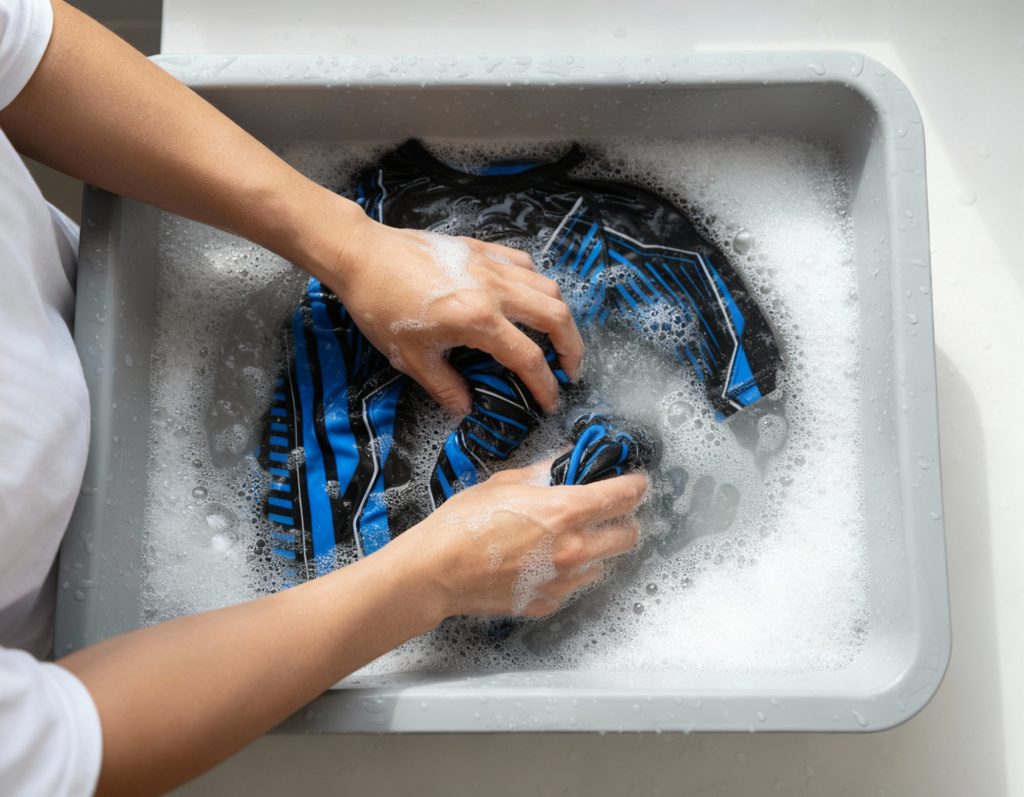Rash Guards
How To Wash A BJJ Rash Guard (and Make It Last Longer)
Want to know hot to wash a BJJ rash guard properly? A high-quality rash guard can last for years — but only if you care for it the correct way. Whether you use it for Brazilian Jiu-Jitsu, surfing, or swimming, every session exposes it to sweat, saltwater, and sometimes chlorine. Without proper care, your gear can lose elasticity, fade, and develop odor. At RashGuards.ph, we’ve tested rash guards in real training and pool environments. Here’s the expert-backed way to wash, dry, and maintain them — including specific care for chlorine-exposed rash guards.
Step 1: Rinse Immediately After Use
Don’t let sweat, salt, or chlorine dry into the fabric. Rinse your rash guard in cool, fresh water right after training or swimming. This stops salt and chemicals from breaking down the fibers that give the fabric its stretch and color.
Step 2: Use Mild Detergent Only
Wash using cold water and a gentle, bleach-free detergent. Avoid fabric softeners and hot water — they weaken spandex fibers and shorten your rash guard’s life.
– Use mild or sportswear detergent
– Avoid bleach, softeners, and hot water
Step 3: Hand Wash Whenever Possible
Machine washing is fine occasionally, but hand washing preserves color, stretch, and seams. Soak your rash guard in cool water with a bit of detergent for 10–15 minutes, gently rub, rinse, and air dry.
Step 4: Air Dry in the Shade
Heat and sunlight are the enemies of elastic fabrics. Never use a dryer. Hang or lay flat in a shaded area with good airflow. Turn inside out to protect the design.
Step 5: Avoid Rough Surfaces
Concrete pool edges and rough mats can snag and pill the fabric. Sit or change on a towel or smooth surface instead.
Step 6: How to Care for Rash Guards Used in Chlorinated Pools
If you wear your rash guard for swimming, treat it the same way experts care for swimsuits exposed to chlorine. Chlorine is harsh on spandex and elastane — the fibers that give rash guards their compression and flexibility.
1. Rinse Immediately (Before It Dries)
Right after swimming, rinse thoroughly in cool, fresh water. The longer chlorine stays in the fabric, the more it eats away at the stretch fibers. Don’t wait until you get home — even a quick rinse under a shower helps.
2. Wash Gently, Never Soak Overnight
Once home, wash your rash guard in cold water with a mild detergent. Do not soak it overnight — long exposure to detergent or chlorine can damage fibers further. A short 10–15-minute soak is plenty.
3. Neutralize Chlorine
To counteract chlorine’s effects, add a small splash of white vinegar or use a chlorine-neutralizing rinse made for swimwear (e.g., Suit Saver or Swimwear Cleaner). This stops chemical reactions that cause brittleness and fading.
4. Air Dry Flat, Out of the Sun
After rinsing, gently squeeze out water — never wring. Lay flat in the shade or hang to air dry. Avoid direct sunlight or tumble dryers, as heat accelerates fiber degradation.
5. Rotate Rash Guards
If you train or swim daily, own at least two rash guards and alternate between them.
Step 7: Store Properly
Keep rash guards flat or hanging in a cool, dry area. Never store them damp or in a sealed gym bag — moisture leads to mildew and odor.
Bonus: Remove Stubborn Odor
If your rash guard smells even after washing, try this method:
- Mix 1 part white vinegar with 4 parts cold water.
- Soak for 15–20 minutes.
- Rinse and air dry in the shade.
Vinegar neutralizes odor-causing bacteria without harming the fabric.
Conclusion: Take Care
Your rash guard is more than workout gear — it’s protection, hygiene, and performance in one. Proper care ensures it stays tight, fresh, and durable through countless rolls and swims.
Upgrade or design your own rash guards here:

